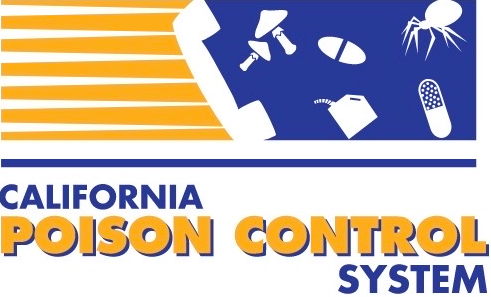By Sean P. Nordt, MD
Spring 2009
Introduction
Hydrocarbons (HC) are organic compounds containing primarily hydrogen and carbon atoms, although they may contain other molecules such as halogens or alcohols. Generally speaking there are two types of HC, aliphatic or straight chained and cyclic, aromatic, or other ringed structures. Hydrocarbons are derived from many different sources including: plant materials, animal fat, natural gas, and coal. Hydrocarbons are widely used in daily life and industrial applications as fuel, lubricants, solvents, degreasers, etc. Some HC are used medicinally such as chloral hydrate, chlorobutanol, and alcohols. Three general “methods” of inhaled HC abuse are employed:
- “sniffing,” whereby the HC is directly smelled from a container e.g., glue, correction fluid
- “huffing,” where HC is applied to cloth and held to the face
- “bagging,” where HC is placed in a plastic bag and inhaled.
Case presentation
A 16 year old male was being chased by a police officer when he suddenly collapsed and was found to be pulseless and unresponsive. The police officer had found the child behind a school with a spray paint can and a rag in his hand. When the police officer told the child to drop the paint can and rag, the child ran. The child collapsed within 100 yards of running. The police officer immediately called for paramedics and began CPR. When the paramedics arrived three minutes later, an automatic external defibrillator was applied and found the patient to be in ventricular fibrillation. A single biphasic shock was delivered, followed by return of spontaneous circulation with a blood pressure of 130/70 mm Hg, heart rate of 120 bpm and respiratory rate of 40/minute. The patient became responsive and was transported to the emergency department (ED). In the ED he was awake but somnolent. On physical examination a small amount of gold colored paint was seen below each nostril with local erythema. Vital signs were now blood pressure 120/80, pulse rate of 90, and respiratory rate of 20. He was afebrile. No signs of trauma were seen on exam. Laboratory analysis was unremarkable except for a mildly elevated white blood cell count, serum chloride of 120 mEq/L and serum bicarbonate of 16 mEq/L. In addition, there was protein in his urine. Once awake, the patient admitted to abusing metallic spray paint several times a day for the past several months. He stated he now notices that he is having some difficulty walking and some slurring of his words. He was admitted to the intensive care unit for observation. A computerized tomography scan of his brain showed some early diffuse white matter changes. He was noted to have a slightly wide based gait during admission but otherwise a normal neurologic examination. The patient did not have any subsequent episodes of ventricular dysrhythmias. He was discharged the following day in the care of his parents with outpatient referral to a neurologist and also a support group for teenagers that abuse inhalants.
Questions
- What is the name of the syndrome that is described in the case above?
- Based on the laboratory analysis, which hydrocarbon do you suspect the patient has been abusing?
- Can brain white matter changes be seen following chronic hydrocarbon abuse?
Epidemiology
The majority of HC exposures are unintentional and result in minimal or no toxicity. However, both intentional and occupational exposures can result in severe morbidity and mortality. In 2005 the American Association of Poison Control Centers (AAPCC) Toxic Exposure Surveillance System (TESS) reported almost 54,000 exposures to HC, 2.2% of all calls, with a large number occurring in children less than 6 years of age. On average there are 13 deaths per year resulting from HC exposures reported to poison control centers in the US.
Pathophysiology
Depending upon the physicochemical properties of an individual HC, the toxicokinetics can vary greatly. HC that are highly volatile exert their toxicity primarily through the inhalation route. These volatile HC are also abused for central nervous system (CNS) depressant effects. Absorption from the gastrointestinal (GI) tract is also variable with lower molecular weight (MW) compounds being absorbed more so than higher MW HC. For example, a 14 carbon containing HC can be as much as 60% absorbed compared to 5% for a 28 carbon containing HC with virtually zero being absorbed with a greater than 32 carbon containing product.
Hydrocarbon absorption following dermal exposure is generally low. However HC have a “defatting” property resulting in destruction of the stratum corneum. Prolonged contact, abraded skin, and repeated exposure all may increase dermal absorption.
As many HC are quite lipophilic, distribution into fat can be substantial. Hydrocarbons may be eliminated unchanged as parent compounds or metabolized to various metabolites, some of which may be toxic. There are two well known HC that get converted in vivo to toxic metabolites. The first is carbon tetrachloride, a compound that was once used extensively in the dry cleaning industry and in fire extinguishers. Hepatic metabolism of carbon tetrachloride produces a free radical that can be hepatotoxic, leading to fulminent hepatic necrosis. The second is methylene chloride, a chemical and gas that is converted in the body to carbon monoxide. The elimination half life varies greatly amongst different HC and can be on the order of several hours to several days. The most common organ affected by HC aspiration is obviously the lungs. Besides directly damaging lung parenchyma, HC dissolve lung surfactant, leading to alveolar collapse and extensive pneumonitis.
Clinical presentation
Although pulmonary toxicity from these agents was once believed to be caused by GI absorption and subsequent delivery to the lungs, it is now thought to be a direct toxic effect of the HC from aspiration into the pulmonary system. Probably the most important physicochemical property determining pulmonary toxicity is the viscosity of the individual agent, with less viscous or more “water-like” compounds such as kerosene and gasoline increasing risk of aspiration and subsequent pneumonitis. Agents with a much higher viscosity like motor oil are less frequently aspirated and therefore considered less toxic. Vomiting after HC ingestion greatly increases the risk of aspiration and should be prevented if at all possible. The larger the volume of HC ingested the increased risk of vomiting and possible aspiration. For this reason induction of vomiting and the administration of large volumes of liquids to “dilute” HC should be avoided.
Clinically, signs and symptoms following aspiration of HC are generally seen soon after exposure, often manifesting as coughing or choking and often described as “sputtering.” Early signs include tachypnea, hypoxia and occasionally hemoptysis. A ventilation perfusion mismatch can be seen from local destruction of lung parenchyma and alveolar collapse. There is often a radiographic “lag time” of HC pneumonitis following the onset of clinical signs and symptoms that can be delayed up to 24 hours. However, the majority of chest radiograph abnormalities are seen within 4 to 6 hours.
Many HC are rapidly and extensively delivered to the brain based on the high degree of lipophilicity, particularly following the inhalational route. As mentioned above, HC are often abused for their CNS effects. Due to the high lipid content in myelin in CNS white matter, chronic abuse can result in a leukoencephalopathy and permanent neurologic sequelae. CNS depression and coma may be seen with large exposures, although these may be preceded by an initial period of agitation. Clues on physical examination of inhaled HC abuse include paint or redness around the nose and mouth and defatting dermatitis of the hands. Ataxia, dementia, and dysarthria may occur with prolonged, chronic abuse.
Certain HC are notorious for causing peripheral nervous system effects, primarily an axonopathy. Probably the most well known of these are n-hexane and methyl-n-butyl ketone, both metabolized to a common toxic metabolite.
“Sudden sniffing death syndrome” (SSDS) is a phrase that has been used for the clinical presentation described in the case above. It can occur following any HC exposure, but primarily after inhalation exposures. This syndrome is thought to be caused by “cardiac sensitization,” whereby cardiac myocytes become more sensitive to endogenous catecholamines (e.g., epinephrine) and tachydysrhythmias after exposure to a HC. SSDS was once thought to be only seen in halogenated HC exposure, but it has now been reported with exposures to many non-halogenated HC. The sequence of events begins when a person being exposed to a HC is startled or frightened (e.g., being chased by police) resulting in an adrenaline surge precipitating a fatal ventricular dysrhythmia.
Hydrocarbons are irritants to skin and can cause erythema and dryness, in addition to their defatting properties resulting in loss of normal dermal adipose. Defatted as well as abraded skin can increase systemic absorption of the HC. Severe morbidity has been associated with high pressure “injection” of HC following occupational exposures (e.g., grease guns), generally involving the upper extremities. This is a true orthopedic emergency requiring immediate referral and surgical debridement.
Several HC, particularly those with halogenated components, have been shown to be hepatoxic. The best described of these is carbon tetrachloride, which as noted above is converted in vivo to a toxic metabolite resulting in centrilobular hepatic necrosis. Other agents, such as trichloroethylene may also cause injury to the liver following excessive exposures.
Hydrocarbons may also affect the renal system. The most well described of these is toluene, found in a number of different products such as paints. Many of these products are abused since toluene can lead to CNS intoxication when inhaled. Heavy toluene exposure can cause a hyperchloremic renal tubular acidosis. In addition, toluene is metabolized to benzoic acid that can further contribute to a metabolic acidosis.
Diagnosis
The diagnosis of HC toxicity is generally known on presentation based on exposure history. Clues in a comatose or unresponsive patient include a hydrocarbon odor on the breath. There are a limited number of laboratory tests that can be used to identify hydrocarbon exposure, and most are used predominantly in an occupational setting. These would include urine hippuric acid for toluene exposure and urine phenol for benzene exposure. Other than for methylene chloride that is metabolized to carbon monoxide, there are no other readily available tests for acute hydrocarbon poisoning. Any patient that had initial coughing or choking following HC ingestion should be referred to an emergency department for evaluation. Clinical signs and symptoms are usually manifested within 6 hours of HC exposure, particularly after aspiration. Therefore, a patient that remains asymptomatic or was initially minimally symptomatic but then asymptomatic during an observation period of at least 6 hours can be safely discharged with strict return precautions. If a chest radiograph is obtained around 6 hour after exposure, it should also be normal. Some halogenated hydrocarbons are radio opaque and may be seen on abdominal radiograph after ingestion. While this may rarely confirm exposure there is little utility in routine abdominal radiography for HC exposures. Consider hydrocarbon exposure in a young patient following ventricular tachycardia or a ventricular fibrillation arrest, particularly if hydrocarbon containers or paraphernalia are found near the patient.
Treatment
Dermal decontamination following topical HC exposure should include removal of all clothing and copious irrigation with soap and water. Defatting of skin may occur with prolonged contact of contaminated clothing.
Ophthalmic HC exposures should immediately be irrigated with copious water for at least 15 minutes, ideally at an eye wash station if available and before transport to a health care facility. Copious irrigation should be continued or repeated if the patient is still symptomatic in the emergency department. This should be followed by thorough physical examination including visual acuity and slit lamp examination and ophthalmologist referral as indicated.
There is generally no role for gastrointestinal decontamination following HC exposure as activated charcoal does not bind HC well and may increase aspiration risk. Gastric lavage and dilution are not recommended following most HC exposures. There is generally no role for extracorporeal removal methods (e.g., hemodialysis, hemoperfusion) following HC exposures unless severe rhabdomyolysis or other metabolic issues need to be addressed.
For patients being observed in the emergency department an initial chest radiograph is not generally indicated unless the patient is symptomatic, but should be considered at 6 hours even if the patient remains asymptomatic before discharge to ensure subtle aspiration findings are not present. If radiographic abnormalities potentially secondary to HC exposure are found at any time this should prompt extended observation or possible admission to a monitored setting.
If the patient is symptomatic at the time of arrival to the emergency department following HC exposure, immediate attention to the ABCs should be addressed. Intravenous access, supplemental oxygen, and continuous monitoring including pulse oximetry should be obtained. The mainstay of treatment is primarily aggressive supportive care. Early endotracheal intubation should be considered in patients with respiratory distress or depressed mental status, and in those at risk of vomiting with inability to protect the airway. Obtaining a twelve lead electrocardiogram should be considered in symptomatic inhalational exposures, particularly if abnormal vital signs are present or irregular cardiac rhythms suspected. An initial chest radiograph should be obtained in symptomatic individuals with subsequent daily chest radiographs as needed.
Following HC aspiration, a severe chemical pneumonitis can be seen and may progress to acute respiratory distress syndrome. Corticosteroid use in this setting is controversial, however, if used the administration of empiric antibiotics should be considered. If corticosteroids are not used, antibiotics are generally withheld unless evidence of a secondary bacterial pneumonia is present.
In severe cases, patients with hydrocarbon aspiration my present or rapidly develop adult respiratory distress syndrome (ARDS). These cases are difficult to manage and often require advanced airway support. Mechanical ventilation with 100% oxygen and liberal use of positive end expiratory pressure (PEEP) can be beneficial. Symptoms may persist for extended periods and fatalities can occur. Heroic life support measures to treat hydrocarbon-induced pneumonitis and hypoxia have been utilized, including ECMO and the administration of pulmonary perfluorocarbon solutions, but have had limited success.
Occasionally, patients inhaling hydrocarbons can present with ventricular dysrhythmias. Most often these will have resolved by the time of arrival at the ED. If PVCs or ventricular rhythms are still present after arrival, blockade of hyperstimulated beta-receptors on cardiac myocytes with a beta-receptor blocking agent such as esmolol may effectively eliminate these dysrhythmias.
Hydrocarbons are ubiquitous in our society and both intentional and unintentional exposures are common. The key to minimizing or eliminating morbidity and mortality is prevention. Hydrocarbons and other chemicals should always be kept in original, well marked child resistant containers out of the reach of children.
Discussion of case questions
- What is the name of the syndrome that is described in the case above?
The above case describes “sudden sniffing death syndrome,” which is thought to be due to cardiac sensitization by hydrocarbons to endogenous catecholamines. - Based on the laboratory analysis, which hydrocarbon do you suspect the patient has been abusing?
This patient has a hyperchloremic metabolic acidosis and protein in his urine suggestive of a renal tubular acidosis. Toluene is well known to cause a renal tubular acidosis and is found in paints. - Can white matter changes be seen following chronic hydrocarbon abuse?
Chronic hydrocarbon abuse can result in destruction of myelin in the white matter and progress to a leukoencephalopathy.



